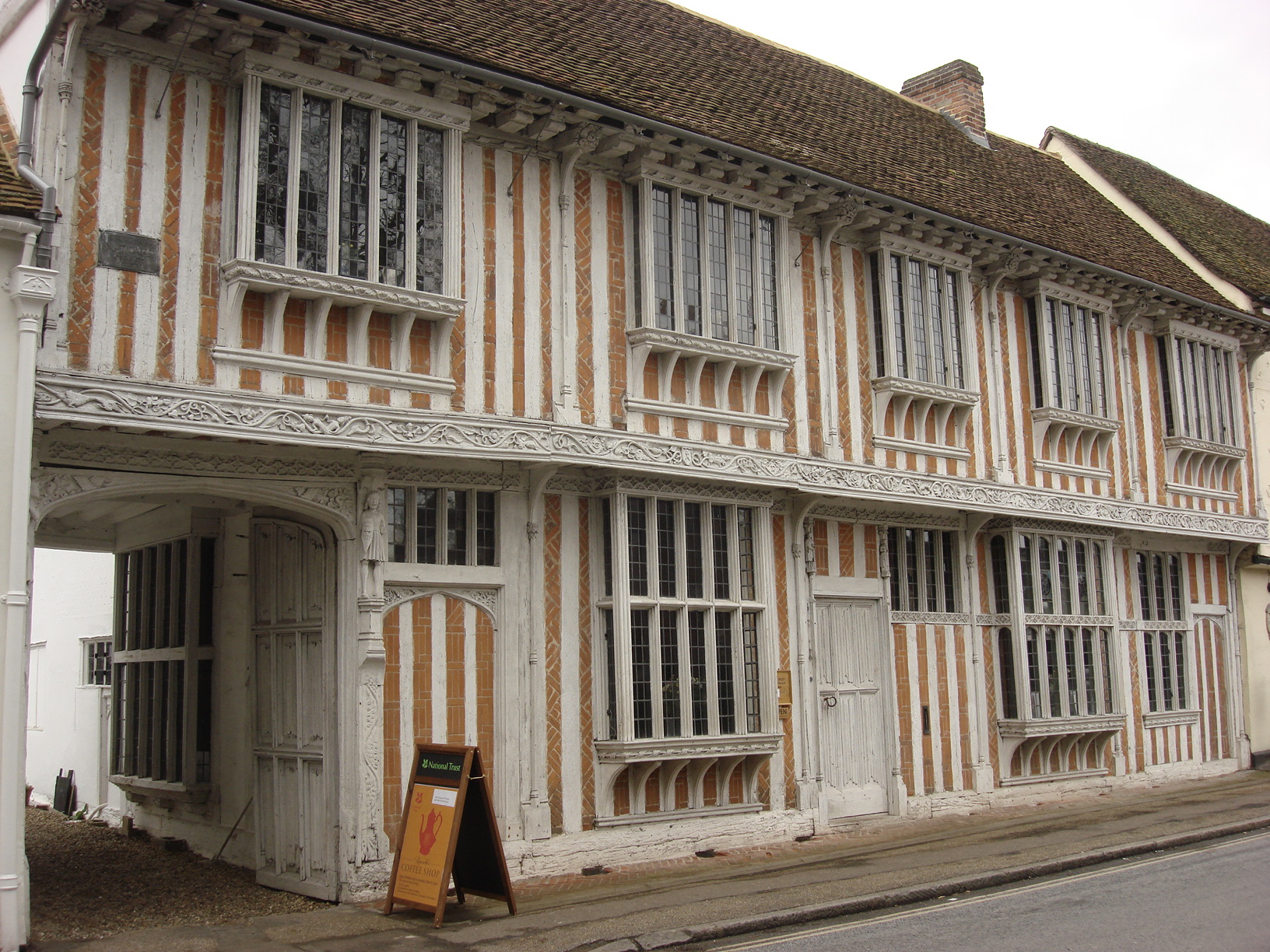Paycocke's House.JPG on:
[Wikipedia]
[Google]
[Amazon]
 Paycocke's House and Gardens are a surviving example of a Tudor merchant's house and garden in
Paycocke's House and Gardens are a surviving example of a Tudor merchant's house and garden in
 The site of the gardens had previously been an industrial yard used by Thomas Paycocke and other merchants in the town of Coggeshall. They were a significant part of Paycocke's House. The gardens had been reworked in an Arts and Crafts style by the Noel family.
The gardens were restored by the National Trust in the Arts and Crafts style from 2008.
The site of the gardens had previously been an industrial yard used by Thomas Paycocke and other merchants in the town of Coggeshall. They were a significant part of Paycocke's House. The gardens had been reworked in an Arts and Crafts style by the Noel family.
The gardens were restored by the National Trust in the Arts and Crafts style from 2008.
Coggeshall
Coggeshall ( or ) is a small town in Essex, England, between Colchester and Braintree on the Roman road Stane Street and the River Blackwater. It has almost 300 listed buildings and a market whose charter was granted in 1256 by Henry III.
...
, Essex
Essex () is a county in the East of England. One of the home counties, it borders Suffolk and Cambridgeshire to the north, the North Sea to the east, Hertfordshire to the west, Kent across the estuary of the River Thames to the south, and Grea ...
, England. The house was built for Thomas Paycocke, a wealthy cloth merchant in the town. The house was very nearly destroyed in the 19th century, but was rescued and restored by Lord Noel Buxton
Noel Edward Noel-Buxton, 1st Baron Noel-Buxton, PC (9 January 1869 – 12 September 1948) was a British Liberal and later Labour politician. He served as Minister of Agriculture and Fisheries under Ramsay MacDonald in 1924 and between 1929 a ...
in the early 20th century, before being handed to the care of the National Trust
The National Trust, formally the National Trust for Places of Historic Interest or Natural Beauty, is a charity and membership organisation for heritage conservation in England, Wales and Northern Ireland. In Scotland, there is a separate and ...
.
The house has been described as an attractive half-timbered house, notable particularly for its intricate woodwork and carvings.
History
Thomas Paycocke was a successful businessman in the later half of the 15th century. He has been described as anartisan
An artisan (from french: artisan, it, artigiano) is a skilled craft worker who makes or creates material objects partly or entirely by hand. These objects may be functional or strictly decorative, for example furniture, decorative art ...
, having made his money in a skilled craft. The wool trade was the dominant economic force in East Anglia, including in the town of Coggeshall, and Paycocke capitalised on this. The house was built from a medieval hall as a place for him to live as well as a place to process wool. It would also have served as a status symbol in Coggeshall due to the intricate nature of some of the details of the house.
The house was built outwards from an existing medieval building, which was owned by Thomas Paycocke's father, John Paycocke. John Paycocke himself was a relatively wealthy man, and built the original house in or around 1500 as a wedding present for his son Thomas and daughter-in-law Margaret. The initials T.P. and M.P. appear in the wood carvings that decorate the house. John Paycocke died in 1505, and the land was left to his children, and Thomas Paycocke added a new wing to the house in 1509. Records show that Thomas Paycocke remained a wealthy man. When he died in 1518 he left £1500 () in cash bequests in his will, not including goods or property.
The house stayed in the Paycocke's family until the last male heir died in 1584. The house was subsequently sold to the Buxton family. In 1746, the Buxton family divided it into three smaller cottages and sold it off. The houses later fell into a state of disrepair.
In 1906, the historian G. F. Beaumont protested against the destruction of Paycocke's House. The house was sold to Lord Noel Buxton, a descendant of the Buxton family who bought the house in the 16th century. Buxton oversaw the restoration of the house, and restored a number of carvings. The house was left to the care of the National Trust
The National Trust, formally the National Trust for Places of Historic Interest or Natural Beauty, is a charity and membership organisation for heritage conservation in England, Wales and Northern Ireland. In Scotland, there is a separate and ...
.
Gardens
 The site of the gardens had previously been an industrial yard used by Thomas Paycocke and other merchants in the town of Coggeshall. They were a significant part of Paycocke's House. The gardens had been reworked in an Arts and Crafts style by the Noel family.
The gardens were restored by the National Trust in the Arts and Crafts style from 2008.
The site of the gardens had previously been an industrial yard used by Thomas Paycocke and other merchants in the town of Coggeshall. They were a significant part of Paycocke's House. The gardens had been reworked in an Arts and Crafts style by the Noel family.
The gardens were restored by the National Trust in the Arts and Crafts style from 2008.
References
{{coords, 51.8704, 0.6827, display=title Houses in Essex National Trust properties in Essex Historic house museums in England Coggeshall Hall houses